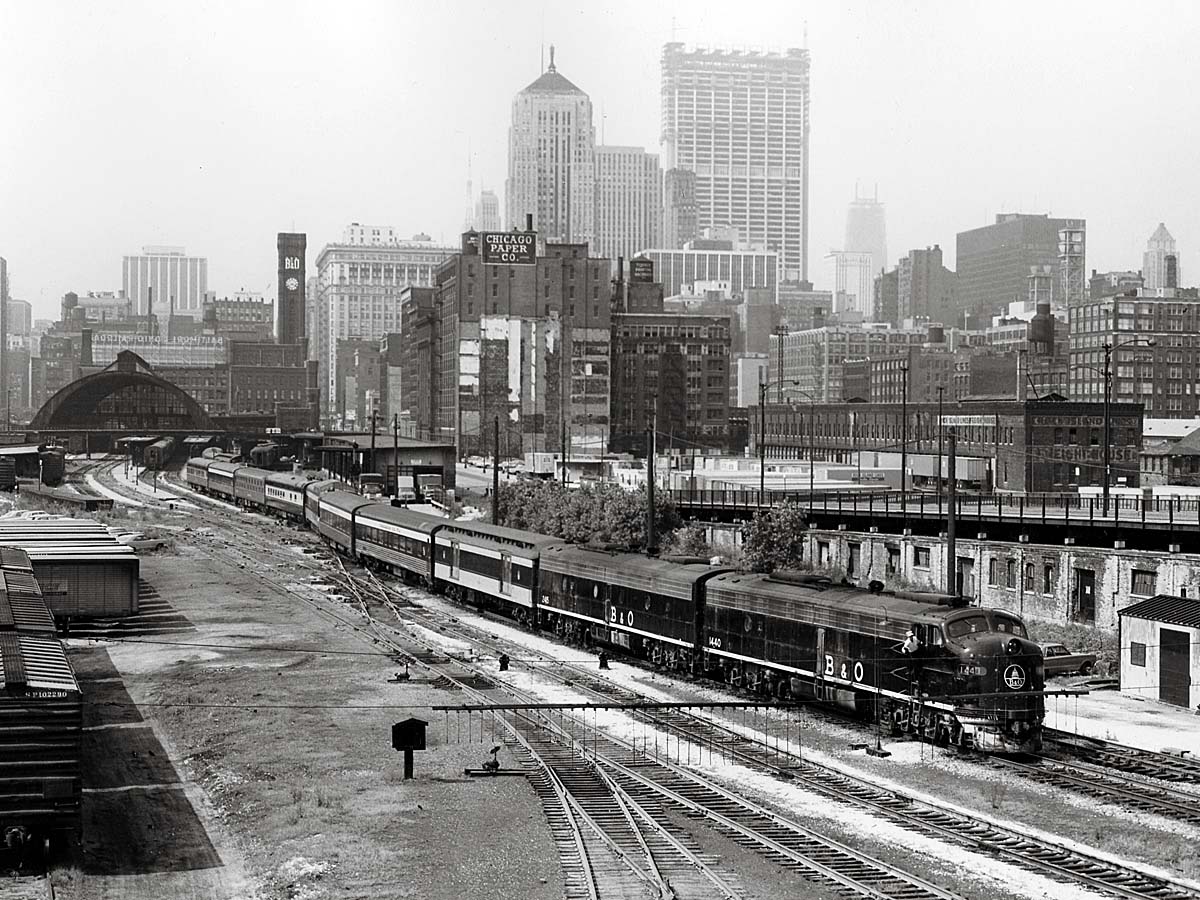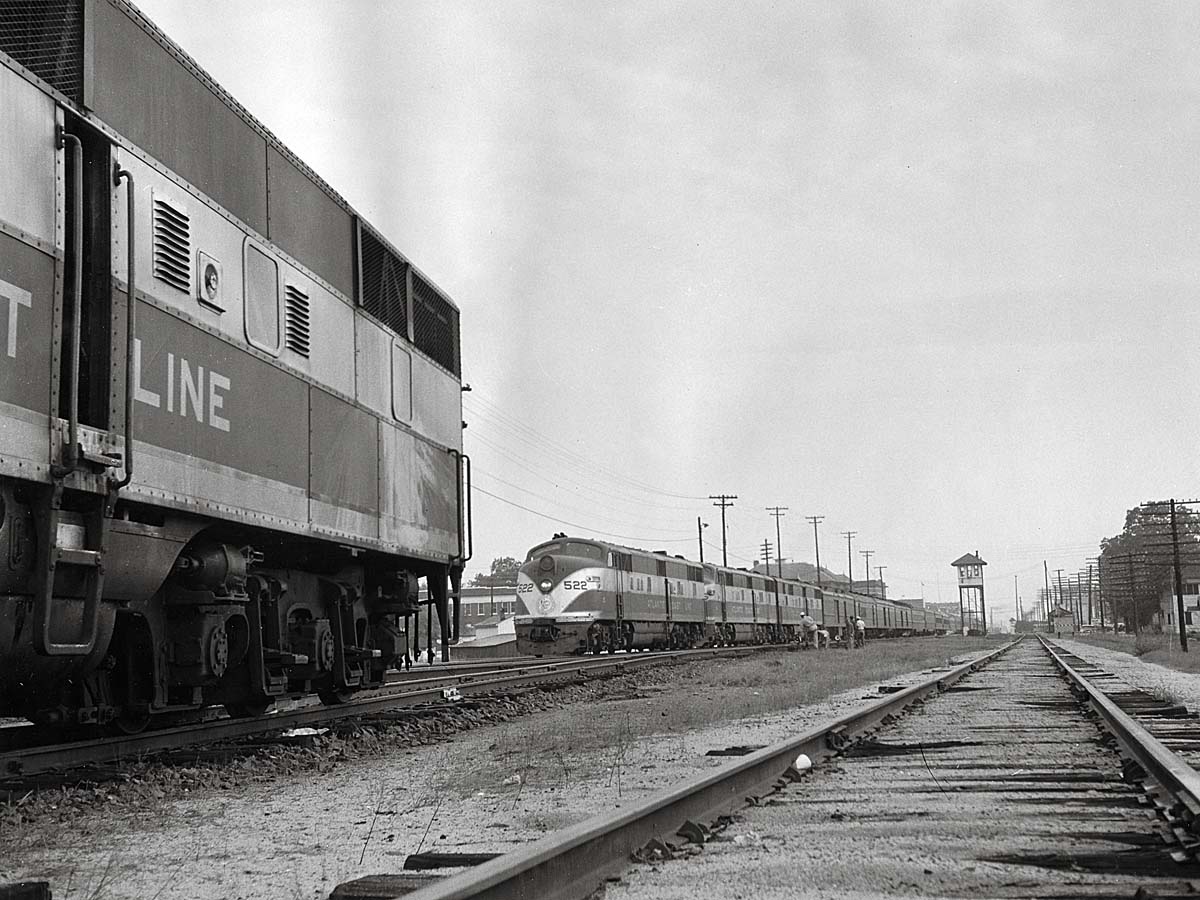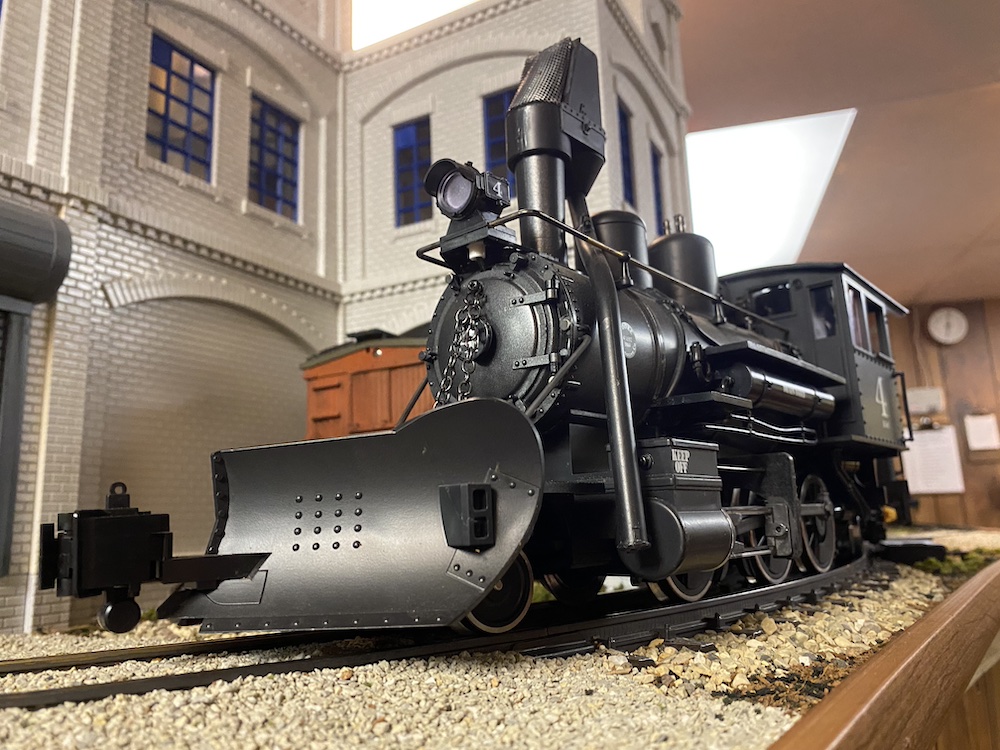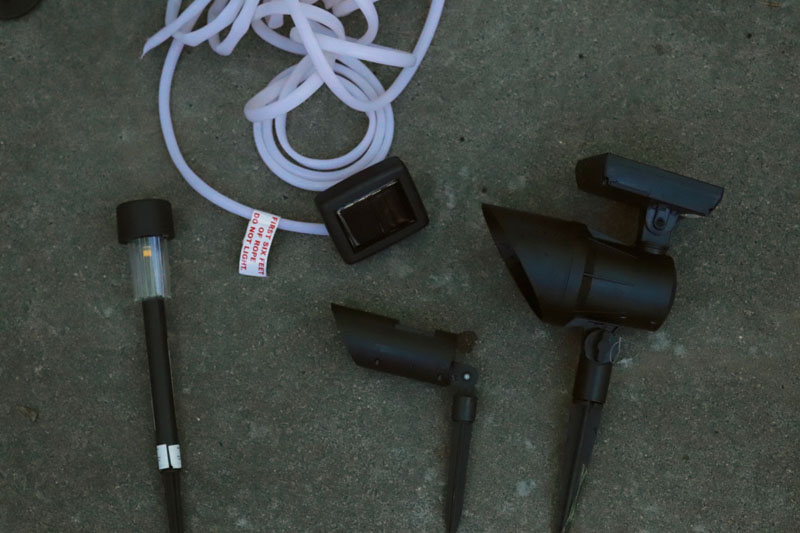
Scene lighting allows you to shine a spotlight on your favorite railroad scenes. Again, the idea is to draw the viewer’s eye toward something you want to emphasize, like ridges, waterfalls, and pathways. You can be as creative as you want.
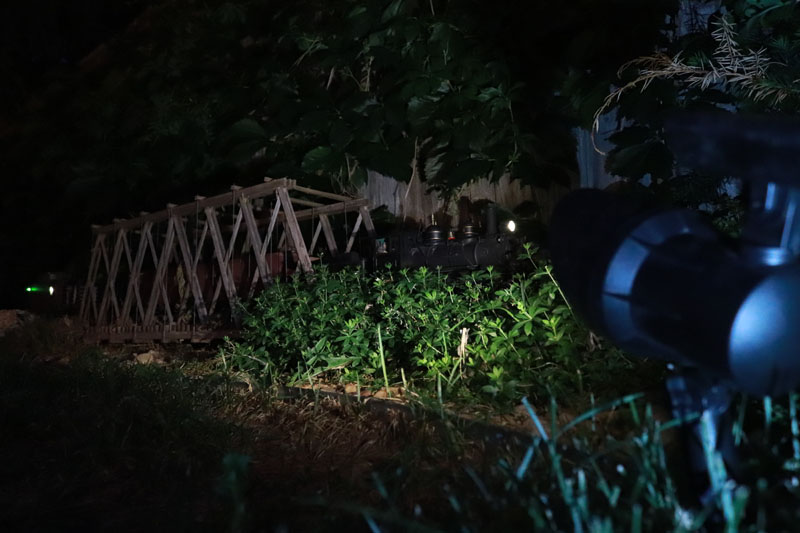
You’ll want to hit the landscape lighting section at your local home improvement store. There you’ll find small flood lights, spotlights, lights that look like rocks—many styles and light patterns. Most of these are designed to work off of 12 volts or so. If you’re running wires in the garden for track power, it’s easy to run wires for your lighting alongside them. If you’re running DCC or some other control system that has constant power to the track, you can also use the track power to power your lights. Just make sure your lights can handle the voltage.
If you’re unsure about where to add scene lighting, buy some cheap solar lights in the style of the 12-volt lights you might ultimately use. Place them around the garden to get an idea of where you’ll want the wired lights to go. This will save unnecessary wiring.
If you don’t feel like running wires, you can usually find solar-powered equivalents to most 12-volt landscape lights.
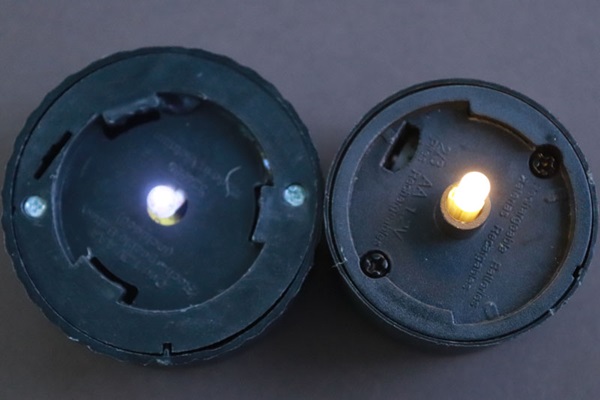
Scene lighting is where I like to play with the color of the light. “Color temperature” is a term you’ll find with landscape lights, particularly LED landscape lights. You’ll often find two kinds—“cool white” and “warm white.” A “warm white” light (more orange in color) gives off a light similar to an incandescent light bulb. A “cool white” LED (more blue in color) gives off a light closer to sunlight.
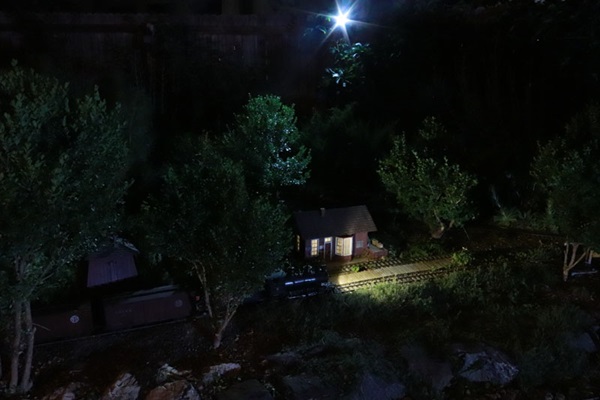
I like to use cool white LEDs for my scene lighting. It is similar in color to moonlight, so when I look out on the railroad when there are no other lights on, it looks like a moonlit night. This also allows for a contrast with the warm white lights I use in the interior of buildings, since they would be (in my era) oil or kerosene lamps.
Scale lighting
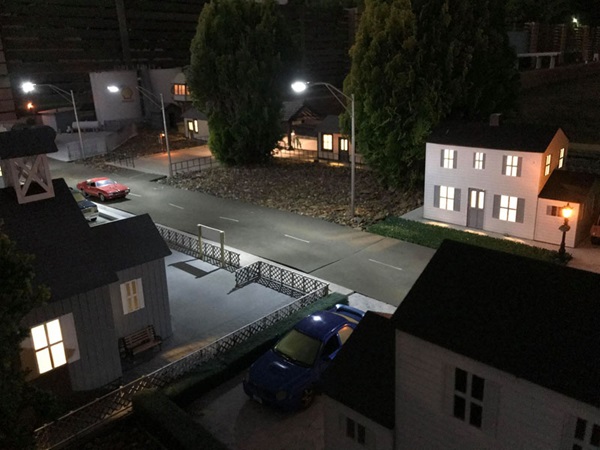
Many of us spend a great deal of time creating small townscapes on our railroads. Building interiors can be easy to light with just a bulb/LED or two. If you’ve got a detailed interior in a building, lighting is a natural way to show off all that work. It’s much easier to see it at night with lighting than in the day.
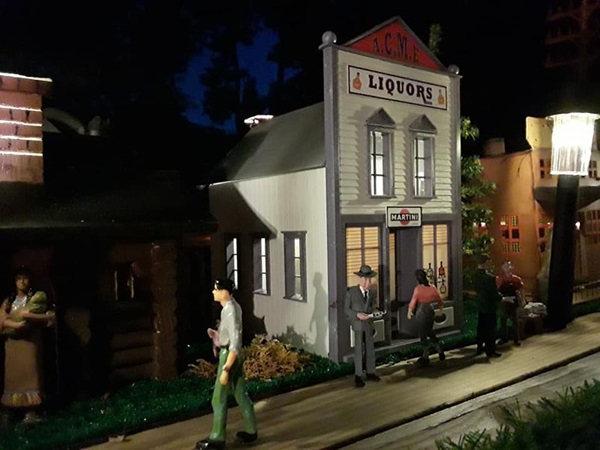
What’s a street without streetlights to light it up? You can buy commercial streetlights or build your own. At this level, the lights are details unto themselves, and serve to create the scene, not just highlight it. I have fond memories of riding Amtrak’s Crescent Limited from DC to New Orleans, passing in the night through countless small towns. Seeing a train pass through such a streetscape in the garden puts me right back in that passenger car. What better effect can we ask for?
Resources
Garden Railways’ back issues:
Solar lighting for rural buildings, Aug. 2014
Let there be light: LEDs, Oct. 2011
Let there be light, Aug. 2011
Light up your railroad, Dec. 2008
Build simple street lamps, Oct. 2007
Nightscaping series, Oct. 2005, Dec. 2005, Feb. 2006
Make your own small landscape lights, June 1996







